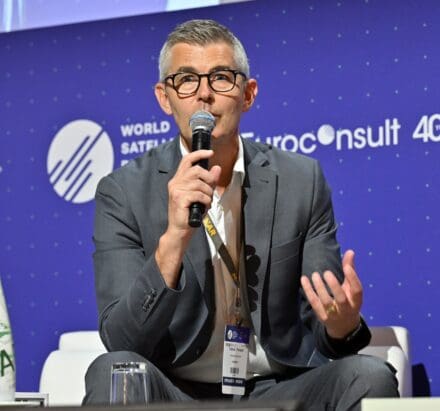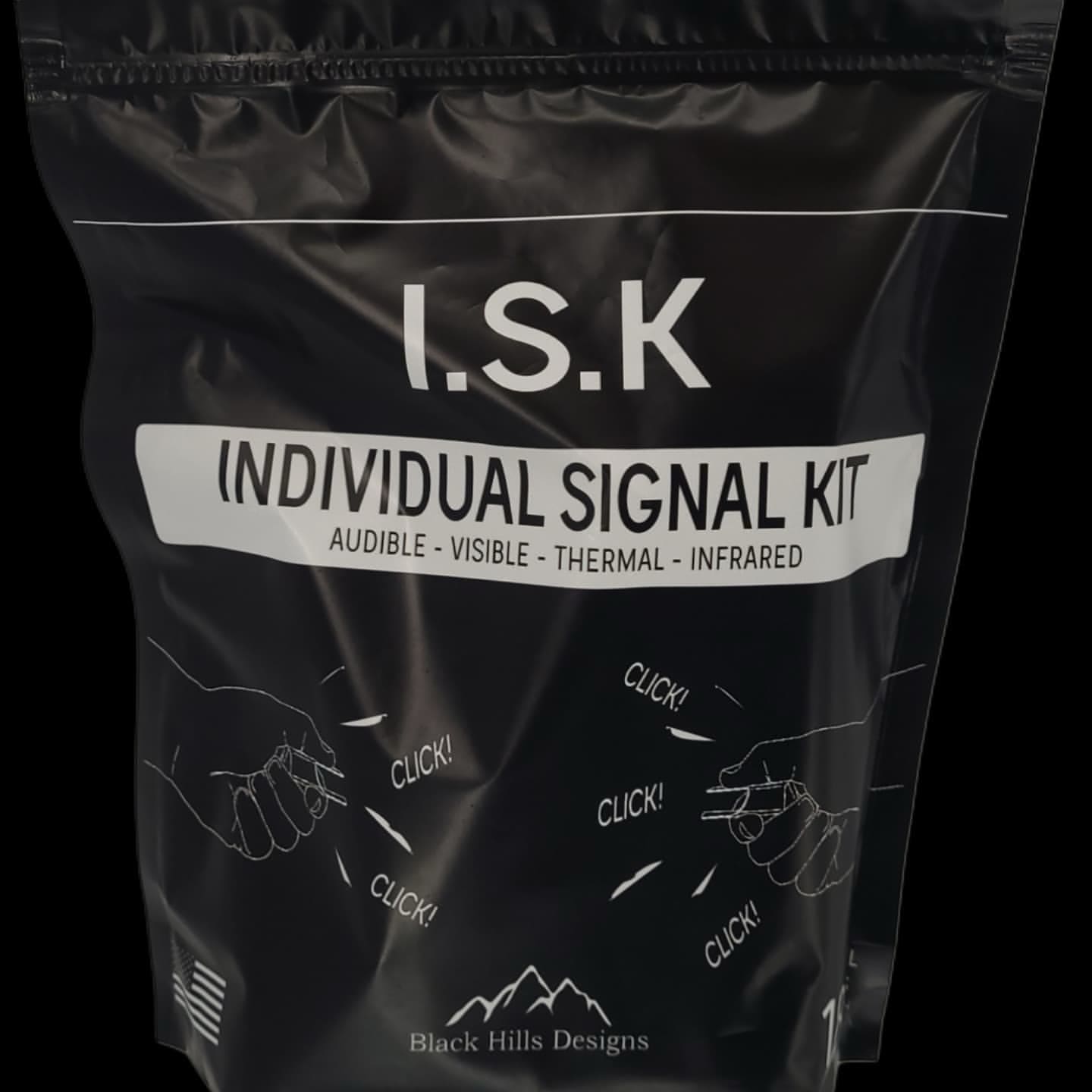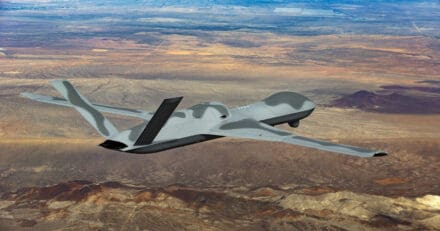We had a chance to ask five questions of Simon Davies, the CEO of the UK-based communications company Spectra Group.
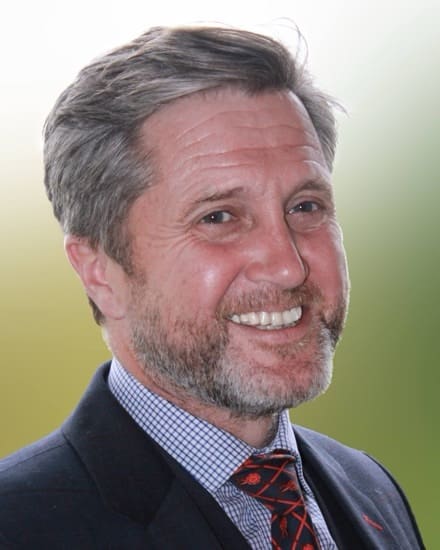
Q – Perhaps you could begin by giving the readers a sense of what Spectra does and how it applies to war fighting.
A – Spectra Group is a specialist provider of secure voice, data and satellite communications systems. Established over 20 years ago, Spectra Group is a veteran-led organisation that prides itself on designing and manufacturing specialist high-quality communications equipment and systems that have been operationally proven to meet the needs of the modern warfighter, in the most demanding operational conditions.
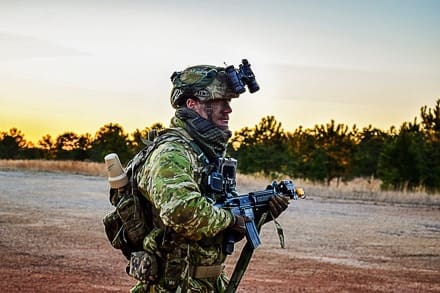
For example, SlingShotTM was conceived and designed to meet Special Forces requirements and, now with over 7000 units sold worldwide, has been operationally proven with both specialist and regular forces globally. SlingShot is a unique, low-size, weight and power (SWaP) system that enables existing UHF and VHF tactical radios to extend their reach into the realm of strategic communications, providing true Beyond Line of Sight (BLOS) and Communications on the Move (COTM), without purchasing new radios. All Spectra Group products are designed with the soldier in mind and are therefore easy to use, secure and have a low probability of intercept or detection.
Tropo
The Troposcatter Family of Systems (FoS) is designed to provide high-bandwidth battlefield data links between key headquarters down to Company level in a modular and easy-to-transport system. With low latency and high bandwidth, the systems are simple, intuitive and easy to set up. Also, due to its architecture, Troposcatter works in a GPS/GNSS denied environment, so can operate at the poles, and is equally difficult to detect or intercept.
Q – What is your latest product?
A – Spectra Group launched our new radio concept GENSS, in January 2024, and it is now in the final stages of prototype testing. GENSS builds on the foundations of our award-winning SlingShot system, embodying Spectra Group’s vision of producing ultimate radio systems that capitalise on technological advances, adapt to the evolving demands of military operations and simplify the user experience. It has been designed and developed through a collaborative effort of tactical communication experts, seasoned military specialists and top-tier U.K. scientists and engineers.
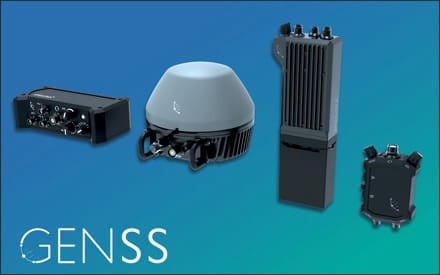
GENSS is a significant advancement in the field of tactical radio communications, due to its modular core framework and software-defined flexibility, heralding a new era in communication technology. It is a modular, agnostic hardware radio system designed to be agile and provide the ultimate interoperability through straightforward software reprogramming to adapt quickly and easily to meet the diverse needs of its users. Capable of operating across HF, VHF, UHF, and satellite bands, GENSS is engineered to conquer Beyond Line-of-Sight (BLOS) barriers and support Communications on the Move (COTM), delivering a robust and agile solution for voice and high-bandwidth data transmission across all domains — land, sea, and air.
Q – What lessons is Spectra learning from the conflict in Ukraine, and how are you applying them to your systems?
A – Modern-day conflict against a determined and advanced adversary is having many effects on communications equipment, its bearers but also the operators who use it. Spectra are conscious of the need to keep radio systems and their representative IT solutions as simple as possible for the operator whilst when needed being able to work in contested spectrum environments.
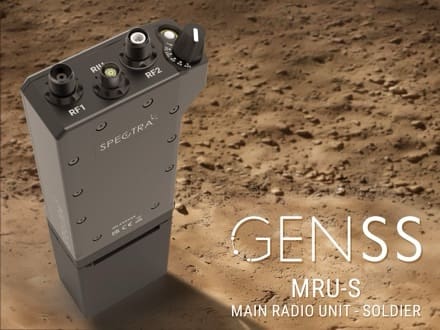
The GENSS product has been designed to be able to operate within the noise floor if needed to avoid detection. It also has an automatic adaptive coding and modulation capability that removes the need for constant ‘link engineering’ by the operator allowing the radio to adapt to tactical conditions and guarantee message delivery. The burden on the soldier is ever increasing not only the amount of technology that one must carry, and the power needed, but also the cognitive burden of becoming an expert on all systems. GENSS has been designed to provide simplicity at the point of use, whilst the unit manages internal processing and power management effectively and efficiently using the best software initiatives available.
Q – To follow up, based on what we are seeing in Ukraine, do you see NATO and in particular, the Five Eyes alliance, cooperating more now on communications systems and standards.
A – Data interoperability and open standards have always beencrucial in the NATO alliance to allow tactical data links to interact effectively with one another. However, with the rapid development of more advanced and complex communications systems and increasingly sophisticated digital and cyber threats to such systems, close cooperation between allies is increasingly important. Spectra Group have worked together with 2iC, a specialist UK battlefield software integration company, to fully integrate the GENSS product with their Lean Service Architecture specification. This is an open schema-based software solution to provide a services-orientated communications integration architecture designedfor mobile, low-powered Internet of Things (IoT) on the battlefield. UK MOD, US SOCOM and many other NATO partners have published under the Open Government license that they are adopting this open architecture.
Q – Artificial intelligence has become all the rage. Just looking around the show floor and AUSA, you see AI enabled systems in every corner. Is Spectra integrating artificial intelligence, and perhaps even machine learning, into its systems, and if so, how?
A – The GENSS radio platform is delivered with an Open API architecture which can be adapted to use AI applications as required. Whilst Spectra Group does not create AI software applications directly, the GENSS platform can be utilised to allow soldier-based software and AI solutions can be easily adopted to maximise capabilities and features available utilising GENSS.
SSD would like to thank Mr Davies for his time and insight into a rapidly evolving field.
For more information, visit spectra-group.co.uk.
